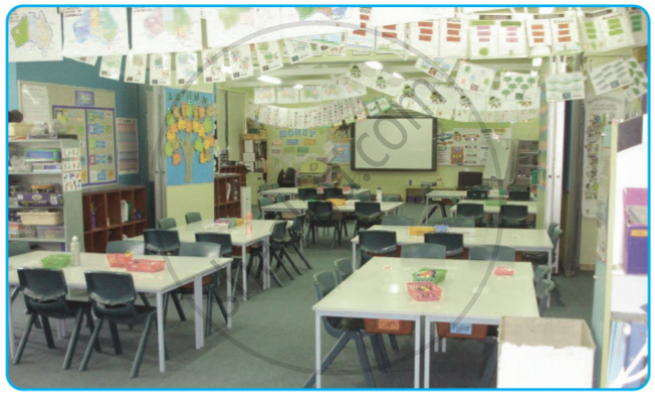Advertisements
Advertisements
Question
Work in groups of four. Discuss how the story would have been different if.
Pongo had arrived on the scene before the last orange was eaten.
Solution
The narrator was got red-handed when he came out from the docks. As his apron string was broken, the policeman, Pongo could find out his bulging pockets. The seventeen oranges in his pockets. Pongo caught him for his theft and locked him in a cabin. He kept the narrator in the cabin, he went out to bring another policeman to be a witness to the case.
The narrator was fear–stricken. A voice from the narrator’s head told him to eat away all the oranges. It forced him to eat the seeds and the peels. The narrator had to eat them to destroy the evidence. He ate the oranges quickly. But only one orange was left. At that time, the policemen had come near the cabin.
The narrator heard the sound of their arrival. They opened the cabin and found only one orange left on the table. They understood the narrator’s attempt to destroy the evidence. They seized the last orange and warned him of his criminal act of destroying the evidence. Both of them decided to produce the narrator before the court to get him punished, thereby teaching a lesson to others.
APPEARS IN
RELATED QUESTIONS
Find and discuss some examples of reports related to the given topic.
Any social issue
Deliver a short speech for about five minutes on the following.
Imagine what will happen if all the trees in the earth disappear. Discuss with your friends and share it with your classmates.
Identify the poetic lines where the following figures of speech are employed and complete the tabular column.
| Figure of speech | Meaning | Lines |
| Synecdoche | A figure of speech in which a part is made to represent the whole or vice versa. e.g. “The Western wave was all a-flame. ” The “Western wave” is a synecdoche as it refers to the sea by the name of one of its parts i.e. wave. |
|
| Paradox |
A figure of speech in which a statement appears to contradict itself. e.g. To bring peace we must war. Be cruel to be kind. |
|
| Onomatopoeia |
A figure of speech wherein the word imitates the sound associated with the object it refers to. e.g. Pitter-patter, pitter-patter Raindrops on my pane. |
|
| Rhetorical Questions |
A figure of speech in the form of a question that is asked to make a point rather than to elicit an answer. e.g. And what is so rare as a day in June? |
Describe the things in the picture using the descriptive words given below.

| Descriptive words | |||
| Large | Small | Good | Happy |
| Big | Little | Great | Joyful |
| Enormous | Miniature | Fantastic | Delighted |
| Gigantic | Minute | Excellent | Thrilled |
| Huge | Petite | Amazing | Glad |
| Massive | Tiny | Wonderful | Pleased |
| Tremendous | Slight | Marvellous | Satisfied |
Change the following into Direct Speech.
An old mouse asked who would bell the cat.
See how they speak at this situation and practise as if you were in that situation.

I have a robot big and______.
Listen and repeat Ca -t
In groups of five, discuss the following topic taking examples from Mary Kom’s life.
Athletes cannot run with money in their pockets. They must run with hope in their heart and dreams in their head.
The following expressions may help you in connecting ideas and presenting your views to the class.
- In my opinion…
- I wholeheartedly support…
- At the outset, let me say…
- I should like to draw your attention to…
Now, write a set of 8 to 10 instruction for the following situation.
A doctor instructing a patient regarding a healthy diet and proper care after a surgery.
